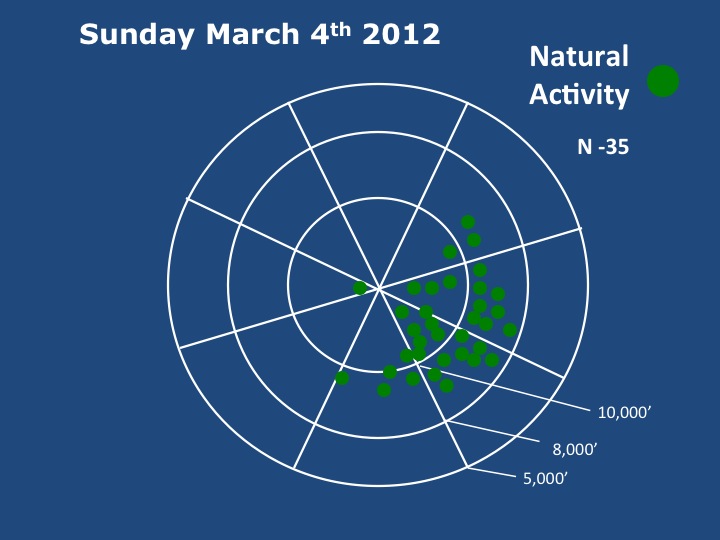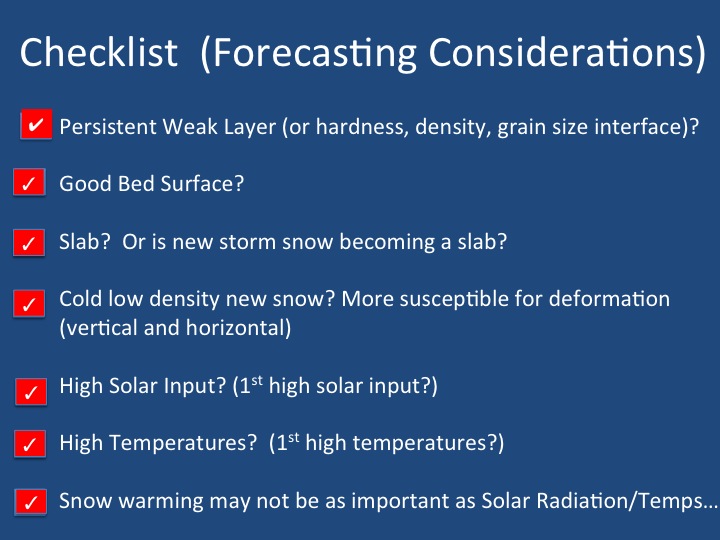
A few people have suggested that I condense my Utah Snow and Avalanche Workshop presentation from early November into an article. There are very few well documented cases of dry snow avalanches being triggered by warming. What you see below will also be in this spring's periodical of the American Avalanche Association,The Avalanche Review.
Synopsis -
Case study of Sunday March 4, 2012. All the natural and human triggered slides that stemmed from Heat/Solar Radiationinduced deformation on a conditionally unstable snowpack.
A powerful Pacific storm shook the Wasatch over the last days of February and early March of 2012. A number of naturals (10) and human triggered slides - many remote - went reported to the Utah Avalanche Center on Friday March 2nd - the day that the storm was winding down. It was the end of the avalanche cycle. Or was it? The next day offered warming temps and overcast skies - some would use the term "green-housing". More human triggered slides, no naturals. The next day dawned clear with temperatures spiking into the 40s; incoming solar radiation skyrocketed above 913 W/m^2 (net solar max 270 W/m^2). The house fell apart. Creep rates went through the roof, clearly exceeding the ductile to brittle threshold, with stresses concentrated along weak interfaces formed mid-February. By the end of the day, over 35 size 2 and 3 naturals went reported to the Utah Avalanche Center.
Article -
Imagine that your 10 year old is having a birthday. The two of you make a plate of brownies, but he doesn’t think it’s sweet enough. “Let’s pour a bunch of sugar on the top!” he says – clearly unaware of his skyrocketing blood sugar. And so you do. He thinks it’s still too bland. “I have an idea! Let’s pour a bunch of honey into a pan and throw it into the freezer for an hour and take it out and place the honey block on-top of the sugar brownies!” How can you resist? An hour goes by and all his 10-year-old bros can barely contain their excitement. You pull out the honey block and set it upon the white granulated sugar, which caps the square of brownies. The whole thing is hard as a rock. What to do? You grab the whole pan and take it to the window to catch the sun and tilt the thing up at say, 38 degrees. Soon, the honey slowly begins to warm and starts to flow…
On Sunday, March 4th 2012, two days after a classic 30-50” Wasatch storm, the day that the sun came out and the honey started to flow, the house fell apart. Over 35 size 2 and 3 cold dry slab natural avalanches went reported to us at the Utah Avalanche Center. How many more went unseen or unreported? It was one of the more fascinating avalanche cycles I had ever seen. What happened? This cycle had little to do with the monsters in the basement – some of the weakest basal depth hoar noted in years. The story begins in February when two clear spells each produced a radiation-recrystallized facet-crust combination with subsequent snowfalls blanketing and preserving the weaknesses. Note the composite profile. A powerful Pacific storm then shook the Wasatch over the last days of February and early March with storm totals of 30-50” noted across the range. Storm totals from Feb 27-March 2nd recorded at the Alta Guard Station (8800’ in Little Cottonwood Canyon) totaled 39.5”/2.44” h20. Here’s what occurred over the next three days – Friday March 2nd through Sunday March 4th… (See aspect/elevation activity roses)
Friday March 2nd - 10 size 2 or 3 naturals went reported to us. Skinning along a ridgeline, my own touring party remotely triggered a size 2 avalanche along the Feb 8 RR facet/crust interface in Silver Fork drainage. 9 other similar human triggered slides went reported that day.
Saturday March 3rd – Zero naturals. 10 size 2 or 3 human triggered avalanches reported to the UAC.
Sunday March 4th – Numerous human triggered slides. But here’s the kicker – 35 size 2 and 3 naturals reported to the Utah Avalanche Center. Yes, you read that correctly - 35.
The weather graph speaks for itself. But a couple take-home points – note how the snow temperatures’ initially spiked on Saturday when we had warming, but overcast skies. Temperatures jumped from highs Saturday of 23 to 42 degrees on Sunday. Solar radiation input jumped from 428 W/m2on Saturday (at 1430 hrs) to 913 W/m2 on Sunday (at 1300 hrs). Net solar (input minus reflected solar) for the two days was 71 W/m2 on Saturday and 270 W/m2on Sunday. Note how the vertical deformation – or settlement rates – skyrocketed from Saturday’s 5.6% to Sunday’s 36%. The rate was 5 times what it was on the previous, overcast – but warm day...36 hours after the last snowflake hit the ground!
What was the pattern? All of these failed on a facet/crust interface buried 2-4’ deep on aspects primarily ranging from east-northeast southeast to south. These were all cold dry slabs where the warming affected the mechanics of the slab but did not penetrate down to the weak layer.
A good number of researchers have looked at temperature effects on snow stability and they boil down to effects on slab stiffness/tensile strength and both the vertical (settlement) and slope parallel (creep) deformation rates. Exner/Jamieson, 2009(1), measured slope parallel speeds of .9-1.5mm/hr (roughly before their toothpicks melted out at 930am. Conway(2) and others have measured rates of 10^-6m/s. Reiweger and Schweizer, 2010 (3), found brittle behavior at strain rates faster than 10^-3m/s which agrees with previous measurements on the ductile to brittle transition. Habermann, 2007 (4), demonstrated that stress concentration at interfaces typically result in higher shear rates. Reiweger and Schweizer, 2010 in lab experiments found that different kind of weak layers show that 90% or more of the deformation is concentrated within the weak layer, leading to strain rates 100-1000 times the global strain rates. I suspect that our March 4th event had both things going on – with slab stiffness perhaps primarily complicit in the human triggered slides while creep rate differential (as implied by the measured settlement rates at the Alta Guard Station) sparked the natural cycle.
Take home points for me are outlined in the checklist. In a nutshell, temperature and solar radiation are critical in and of themselves, but change in same may be more so. Having the structured snow pack was also fundamental. I posit that had the same weather parameters affected a homogenous un-layered snowpack and storm, natural activity may have been at a minimum. It also seemed key that the upper portion of snow affected was low-density powder snow that is more susceptible to deformation than higher density snow (or slabs). Last, but not least, perhaps snow temperature spikes may not be as crucial as the other factors. To be sure, snow and wind are the prime factors for natural slab avalanche release. But what makes this avalanche cycle so compelling - that it is a case study at all - is that it is so unusual and why there are so few documented events of this kind. I hope there will be more research and case studies of similar events in the future.
1. Exner, T., and Jamieson, B., 2009, The effect of daytime warming on snow creep. Proceedings of ISSW- Davos
2. Conway, H., Breyfogle, S., Johnson, J.B. and Wilbour, C., 1996. Creep and failure of alpine snow: measurements and observations. Proceedings of ISSW Banff, AB, Canada
3. Reiweger and Schweizer, 2010, How Snow Fails, Proceedings of ISSW Squaw Valley, CA
4. Habermann, M., Schweizer J., and Jamieson J.B., 2008 Influence of snowpack layering on human-triggered snow slab avalanche release. Cold Regions Science and Technology, Volume 54, Issue 3, p. 176-182.
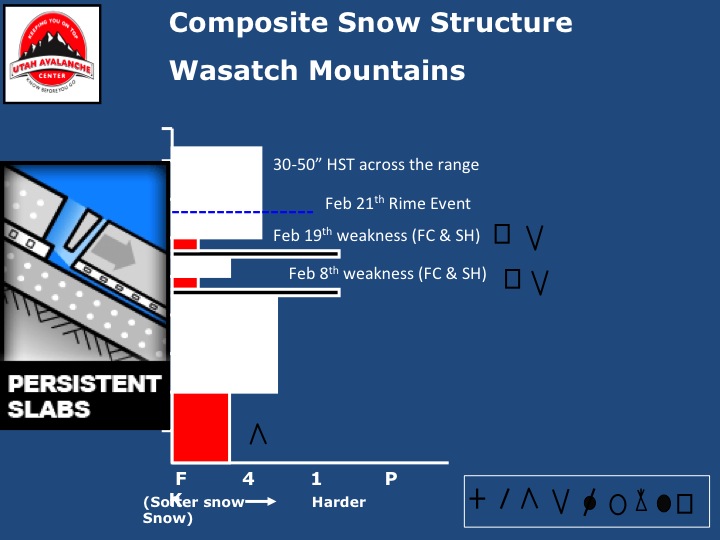
This is a composite profile just prior to the event on March 4 2012. Below is a aspect/elevation rose of natural avalanche activity on March 2, the day that the storm ended.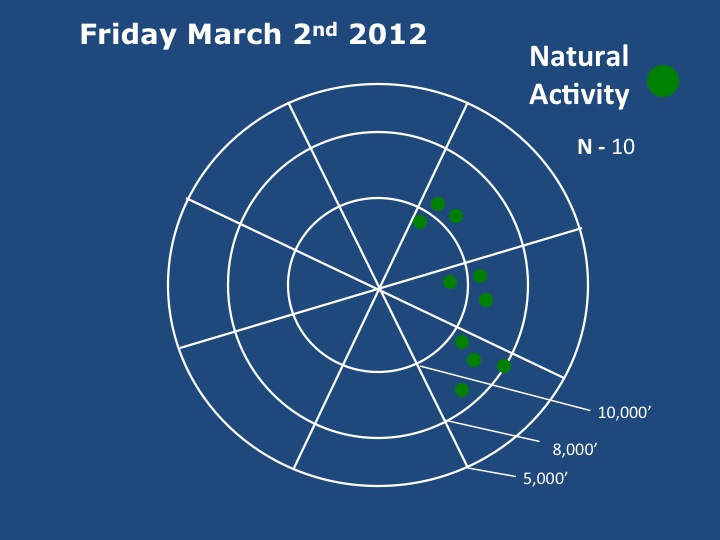
The graph gives an indication of cloud cover, temperatures, incoming solar radiation, and settlement as measured at the Alta Guard Station for March 2, 3, and 4. Note that the solar radiation is net solar (incoming minus reflected).

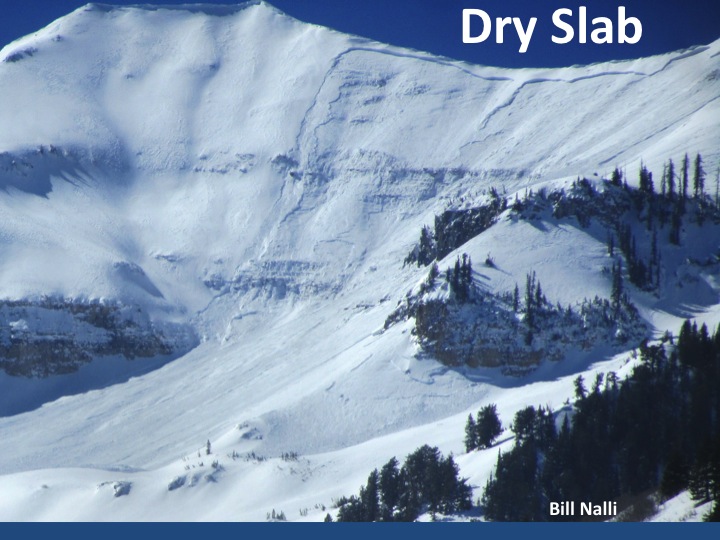
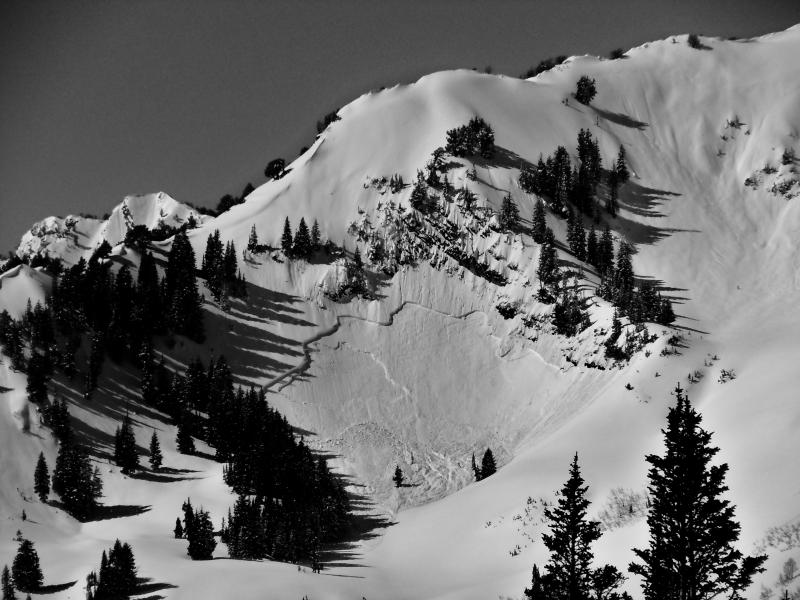
Photos are of the many cold dry size 2 or 3 natural avalanches that released that day on March 4, 2012. (Above - Bill Nalli; Below, Todd Glew) Below is an aspect/elevation rose of the natural avalanche activity on Saturday March 3rd 2012
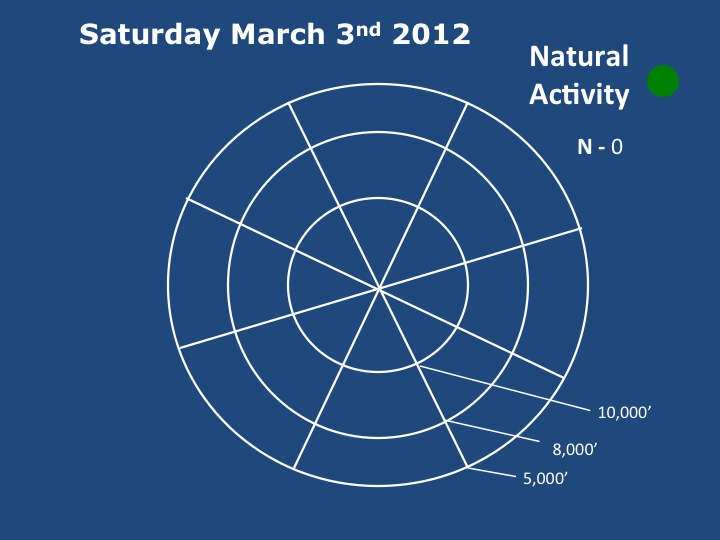
Below is what this whole case study is all about.
